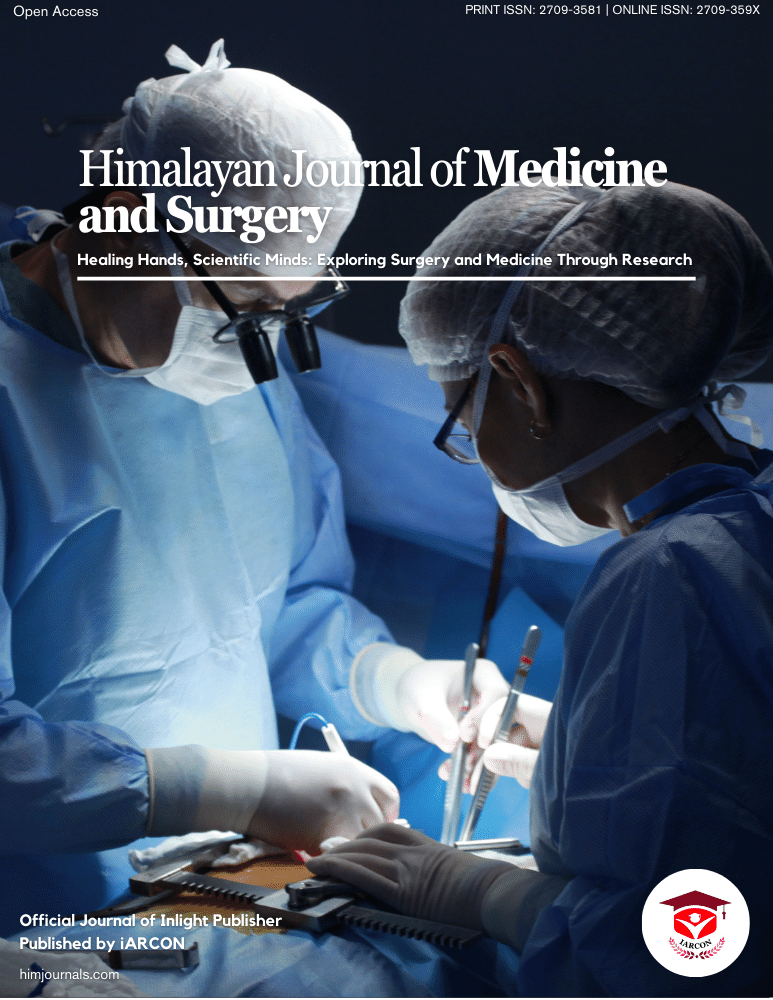Heart attack, clinically known as Myocardial Infarction (MI), is a critical and often life-threatening cardiovascular event that poses a significant global health challenge. It results from the sudden interruption of blood supply to a part of the heart muscle, causing damage or cell death. Myocardial infarctions can have severe consequences on an individual's health and overall quality of life, making them a major concern in the realm of public health [1-3].
In India, cardiovascular diseases (CVDs), including heart attacks, are a leading cause of morbidity and mortality, contributing significantly to the country's health burden. While urban areas and metropolitan regions have witnessed a surge in heart-related conditions due to lifestyle changes, rural areas, such as District Kangra in Himachal Pradesh, are not immune to the rising prevalence of these diseases [4-6].
District Kangra, located in the picturesque state of Himachal Pradesh, presents a unique demographic and geographical landscape. Despite its scenic beauty, this district faces healthcare challenges, including the increasing burden of CVDs like myocardial infarction. Understanding the level of awareness and knowledge concerning the symptoms and risk factors associated with heart attacks among the general public in District Kangra is imperative for devising effective public health interventions and reducing the incidence and impact of this deadly condition.
A heart attack occurs when the blood supply to the heart muscle is obstructed, usually by a blood clot within a coronary artery. This interruption in blood flow results in the death of heart muscle cells. The primary risk factors for myocardial infarction encompass a range of lifestyle-related factors, including smoking, unhealthy diet, physical inactivity, obesity, high blood pressure, diabetes, and family history of heart disease [7-9].
Public awareness and knowledge regarding the symptoms and risk factors of myocardial infarction play a pivotal role in early recognition and timely intervention. Studies have shown that a lack of awareness can lead to delays in seeking medical help, thereby adversely affecting treatment outcome. Moreover, an informed public is better equipped to adopt preventive measures, such as a heart-healthy lifestyle and regular health check-ups, to mitigate the risk of a heart attack [10-12].
This study aims to address the knowledge gap regarding myocardial infarction symptoms and risk factors among the general public of District Kangra, Himachal Pradesh. By evaluating the existing awareness levels and identifying misconceptions, this research endeavors to contribute to the development of targeted public health campaigns and educational programs. Ultimately, the goal is to enhance awareness and understanding of myocardial infarction in District Kangra and empower its residents to make informed choices for heart health.
This study is timely and critical, given the growing prevalence of heart-related conditions in India and the potential for early intervention and lifestyle modifications to reduce the incidence of myocardial infarction. By shedding light on the awareness and knowledge gaps specific to District Kangra, we aim to facilitate the implementation of effective strategies for myocardial infarction prevention and management in this unique and diverse community.
Objectives of the Study
To evaluate the awareness and knowledge regarding Symptoms and Risk Factors for Heart Attack (Myocardial Infarction) among general public of District Kangra, Himachal Pradesh


